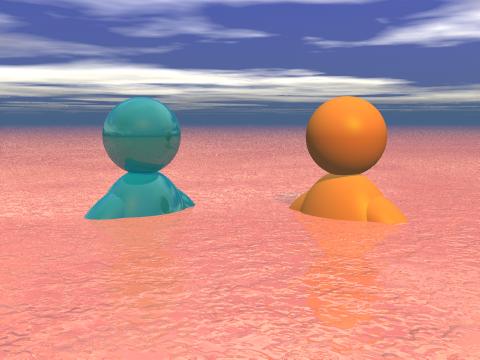One of the key values we treasure most is humour. This is a document we occasionally circulate internally to help our own line people keep their humour through the rigours of air travel.
The Definitive Exercise Program for the Consultant on the Run
This exercise program is designed to help build your mind and spirit through laughter. No one, to our knowledge, actually follows this program; particularly because it could get them thrown off the plane or out of the airport. Remember that it’s a piece of humour and nothing more. The Nexbridge management team hopes you enjoy this regiment and that you don’t suffer undo hard disk strain. Best wishes and good luck.
A balanced physical exercise program, for mind and body, is made up of five key areas:
- Flexibility
- Balance
- Strength
- Endurance
- Dexterity
Flexibility
It’s always prudent to begin your exercise regiment with a good stretch to prevent injuries. Unfortunately, being a travelling consultant, you don’t have the time to do this first. The best stretching can be accomplished using a variety of props, such as passports, credit cards, or contact lenses.
- Get onto the plane.
- Walk carefully to your seat (see Balance).
- Lean way over to your seat, dropping your laptop bag and travel documents into your seat, which is, of course, a window seat. This can be enhanced by getting on last, and having to lean way over the two other people sitting between you and your seat.
- Remember that the laptop bag should be in the seat in front of yours.
- Still leaning over, slide the laptop bag under the seat.
- Drop your props in the aisle.
- Frantically search for your props between the legs of other passengers and hope that your hands (and contact lenses) don’t get squished.
- Remember that you should have put your props in your laptop bag.
- Take out the laptop bag, stretching way over the other passengers, apologizing profusely.
- Put the props into your bag.
- Return the laptop bag under the seat in front of yours.
This exercise can be enhanced by either accidentally sitting in the wrong row, getting on the wrong flight, or taking an airline with no preassigned seating.
Balance
Balance is key to your role as a consultant, so it’s good to start your trip with an easy balance exercise.
- Knowing full well that the airline will lose your luggage at the most inopportune time, make sure that you carry on your absolute upper limit of luggage. It helps to have as many pieces as possible.
- At check-in, hide the ten or fifteen pieces of accessories behind your back – you don’t want the agent glaring at you.
- Simply walking to your flight will be a good warm-up for what is to come.
- You’ll have to do that hiding act again, trying to get past the gate agent. This shouldn’t be too much of a problem, because consultants are usually good at hiding their real intentions anyway.
- Balancing your luggage carefully, walk down the aisle to your seat, adjusting yourself like a ballerina. You will need to do this because you obviously can’t walk in a straight line down the aisle with ten to fifteen pieces of accessories.
Not only is this exercise useful to you as a consultant. After a career of practice, you can use the skills developed here during your retirement. Of course, you won’t be able to carry the same weight, but being able to juggle all those presents for your grand-kids will sure make them happy.
Strength
Good health is enhanced by strength training. Being strong also helps you to put up with the abuse you have to take on a daily basis being in an unprotected, hostile, consultant-unfriendly environment. Fortunately, air travel gives you a really good chance to build your muscles.
- Choose a day when you know it will be turbulent. Bad weather is a good indication.
- If you can’t choose your travel day, bribe the pilot to rock the plane a lot.
- Instead of placing your laptop case under the seat in front of you, put it in the overhead bin. This probably should be done after you have completed the Flexibility exercise otherwise you might hurt your back.
- Sit quietly during taxi, takeoff, and climb.
- As soon as the fasten seat belt sign goes off, stand up, open the bin, jump way from all the other falling laptop cases, reach in all the way to the back for yours.
- Put the other passengers’ (who are obviously consultants too) laptop cases in the overhead compartment. Feel free to ignore non-consultant passengers.
- Remember your manners and offer to hand the other consultants their laptop cases only after you have put them in the overhead bin. They are likely to decline as they are probably exercising also.
- Sit down, open your laptop, and start typing.
- Two minutes later, when the fasten seat belt sign goes back on, quickly pack up your laptop into its case and return it to the overhead compartment.
- As soon as the fasten seat belt sign goes off again, repeat the process.
After much practice, you should be able to do this twenty or thirty times a flight, during thunderstorms.
Endurance
As we all know, there is much we have to endure as consultants. This exercise helps us cope with stress and repeated futile activities.
- At the airport, deliberately go to the wrong terminal.
- Check in there, but leave at least one piece of I.D.
- Walk briskly to your gate, carrying your laptop bag.
- Remember, once you are at the gate, that you left your I.D. at check-in, in the wrong terminal.
- Walk briskly back to the check-in counter, forgetting your laptop bag.
- Remember, half way to the check-in, that you forgot your laptop bag.
- Run quickly back to the gate, hoping that no one stole your laptop.
- Pick up your laptop, then return, walking briskly, though relieved, back to check-in.
- Pick up your I.D. at check-in.
- Walk briskly back to your gate, knowing now that your are moments away from missing your flight.
- Remember, half way back to the gate, that you left your laptop bag at check-in.
- Speed walk, being late, back to check-in. Don’t worry about your laptop bag, because the attendant will be watching it.
- Pick up your laptop bag, check that you have your I.D. and run back to your gate.
If you have extra time, just for kicks, you can repeat this process by lose your credit cards while having a drink at the bar before your flight.
Dexterity
While dexterity is often ignored during an exercise regiment, developing your dexterity skills will improve your ability to perform tasks such as writing on whiteboards without getting your clothes dirty. This exercise can be combined with strength training (see above).
- In coach, with the seat belt on, pull the laptop case out from the seat in front of you.
- Open the tray, without dumping the laptop contents into the seat next to you.
- Place it on the tray.
- Open the lid.
- Turn your laptop on.
- Turn your laptop off.
- Close the lid.
- Repack the laptop case without dumping the contents.
- Close the tray.
- Put the laptop case back under the seat in front of you.
- Repeat 5 times.
I hope that this guide will help you become better, stronger, and more effective when you show up at your client. As an afterthought, you should probably look for airline lounges with showers so that you don’t arrive at your client smelling too badly of sweat. A change of clothes is also essential if you try to perform these exercises during the food service portion of a flight. Mustard and ketchup have a nasty habit of messing up a good workout.
Good luck.






